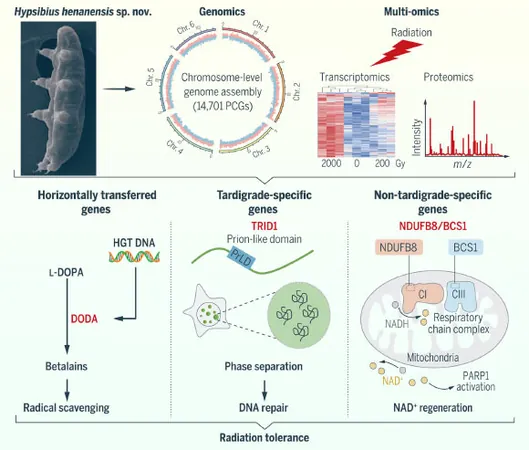
Unveiling the Mysteries of Brain Tumors: Symptoms, Causes, Risk Factors, and Effective Treatments
2024-11-02
Author: Yu
Every year, from October 26 to November 2, we observe International Brain Tumour Awareness Week, a crucial initiative aimed at educating the public about brain tumors and their significant impacts. This awareness week, established by the International Brain Tumour Alliance in 2005, highlights the importance of recognizing symptoms and seeking medical attention promptly.
The Stark Reality of Brain Tumors
In India, it is estimated that between 40,000 and 50,000 people, including both adults and children, are diagnosed with brain tumors annually, according to data from reputable health institutions such as the Asian Heart Institute and the Brain Tumour Foundation of India. These figures underline the urgent need for increased awareness and understanding of the condition.
To help shed light on brain tumors, we consulted healthcare experts Dr. Kaustubh Mahajan, a Consultant Neurologist at SL Raheja Hospital, Mumbai, and Dr. Ravikiran Vutha, a Consultant Neurosurgeon at Apollo Hospital Navi Mumbai.
What Causes Brain Tumors?
The causes of brain tumors remain complex and not fully understood, with genetic mutations being a significant factor. These mutations can lead DNA in brain cells to develop abnormally, resulting in uncontrolled cell growth and tumor formation. Certain inherited genetic conditions, such as neurofibromatosis, Li-Fraumeni syndrome, and Von Hippel-Lindau disease, elevate the risk of developing brain tumors.
Dr. Vutha emphasizes the role of ionizing radiation exposure, common in medical treatments like radiotherapy, as another risk factor. Unfortunately, for many patients, the specific cause of their brain tumor remains a mystery, creating emotional strain as they seek answers.
Types of Brain Tumors: A Closer Look
Brain tumors are classified into two primary categories: primary and secondary. Primary brain tumors arise within the brain and can be either benign (non-cancerous) or malignant (cancerous). Here are some notable types:
- Gliomas: These aggressive tumors derive from glial cells and include astrocytomas, oligodendrogliomas, and glioblastomas. - Meningiomas: Typically benign, these tumors originate from the meninges, which are the protective layers surrounding the brain and spinal cord. - Medulloblastomas: More prevalent in children, these malignant tumors develop in the cerebellum and can spread through cerebrospinal fluid.
On the other hand, secondary (or metastatic) brain tumors originate in other parts of the body, such as the lungs or breasts, and spread to the brain. The classification of a brain tumor is vital in crafting a treatment plan, as benign tumors might only require monitoring or minor surgical intervention, while malignant tumors often necessitate a combination of surgery, radiation, and chemotherapy.
Recognizing Symptoms Is Key
Be vigilant for persistent symptoms that may indicate a brain tumor, as these can interfere with daily life. Common symptoms include severe headaches, persistent nausea or vomiting, changes in vision, and difficulties in speech or mobility. Prompt medical attention can be lifesaving.
As we continue to raise awareness during International Brain Tumour Awareness Week, let us remember that understanding brain tumors is not just about recognizing symptoms but also about acknowledging the emotional and psychological support needed for patients and their families. Together, we can foster a more informed society and improve outcomes for those affected by this challenging condition.
Stay informed, stay aware – your health could depend on it!


 Brasil (PT)
Brasil (PT)
 Canada (EN)
Canada (EN)
 Chile (ES)
Chile (ES)
 España (ES)
España (ES)
 France (FR)
France (FR)
 Hong Kong (EN)
Hong Kong (EN)
 Italia (IT)
Italia (IT)
 日本 (JA)
日本 (JA)
 Magyarország (HU)
Magyarország (HU)
 Norge (NO)
Norge (NO)
 Polska (PL)
Polska (PL)
 Schweiz (DE)
Schweiz (DE)
 Singapore (EN)
Singapore (EN)
 Sverige (SV)
Sverige (SV)
 Suomi (FI)
Suomi (FI)
 Türkiye (TR)
Türkiye (TR)